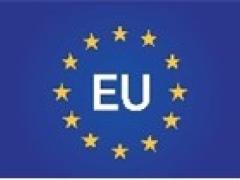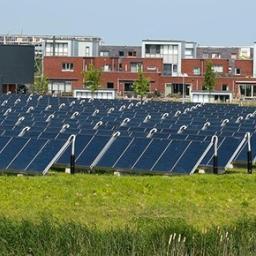New framework of indicators for achieving Sustainable Development Goals fills gap
In 2015, UN member states agreed on 17 Sustainable Development Goals (SDGs) to pursue global sustainable development. They include combating poverty and hunger and promoting responsible consumption and production. Although a variety of scenarios have been developed to achieve certain goals, such as for climate and biodiversity, such scenarios are still lacking for combinations of or all SDGs. The 169 targets and more than 200 indicators that, together with the 17 SDGs, were agreed to monitor progress, are unsuitable for scenario development, as there are too many of them and they are often not clearly formulated or difficult to measure. In an article in One Earth, a group of scientists proposes a more limited set of more easily measurable targets that can be used in scenario analysis for achieving all of the SDGs by 2030. Detlef van Vuuren, researcher at PBL Netherlands Environmental Assessment Agency and professor at Utrecht University, is lead author of the article.
The goals of the 2015 Paris Agreement are widely known and are to limit the global temperature increase to well below 2 °C and, if possible, 1.5 °C. In that same year, the SDGs, to be achieved by 2030, were also established by UN member states. These 17 SDGs are much broader than the climate goals in the Paris Agreement and include, for example, secure livelihoods, food security, sustainable economies and environmental protection. However, little is known about how these SDGs could be achieved simultaneously and in conjunction.
Goals need to be pursued in conjunction
Achieving the SDGs requires major changes in many areas. Because of the great interdependence between the goals, they must be pursued in conjunction. Combatting hunger, for example, may also involve increased use of fertilisers and water, and thus lead to more climate change, increasing water scarcity and pollution. Scenarios made with computer models can provide insight into possible pathways for achieving the SDGs simultaneously. For example, what type of food system could both contribute to greater food security (SDG 2), protect biodiversity (SDGs 14 and 15) and result in less climate change (SDG 13)? And what steps would need to have been taken by 2025 in order to achieve this by 2030?
Achieving the SDGs by 2030 urgently requires more insight
More insight into how the SDGs can be achieved is urgently needed. Little progress has been made on many goals, since 2015. An initial exploration in the article shows that, for the SDGs for which scenario data were available, the goals will not be achieved if current trends continue. However, while numerous scenarios on climate change provide insight into the necessary changes, such as those in energy consumption, transport and land use, such scenarios are not available for simultaneous achievement of multiple SDGs. And, yet, they are needed for working out concrete policy measures.
Researchers propose concise, clear set of targets
Development of usable scenarios requires a concise, clear set of targets that is representative of the SDGs. An international group of researchers, including Detlef van Vuuren and Paul Lucas from PBL, has developed such a specific set of targets and indicators. In doing so, they looked not only at the SDGs but also at international treaties (such as the Paris Agreement) and the scientific literature. On this basis, they propose a set of 36 targets, which have been defined for 2030 (the target year of the SDGs), as well as for 2050, because, also after 2030, work on sustainable development will still need to continue. The targets, for example, include end hunger, achieve adequate health care for all, limit global warming and halt land-system change.
Detlef van Vuuren: ‘At present, scenarios for the SDGs are almost completely lacking. The formulation of 36 measurable, unambiguous targets helps to explore pathways towards achieving the SDGs. Such scenarios make these SDGs far more manageable for policymakers and other stakeholders.’ Researchers from other institutes, in many fields, were involved, including economists, researchers on land and energy systems, social scientists and environmental scientists. PBL’s IMAGE integrated assessment model will contribute to the use of the set of indicators in their scenario studies.




